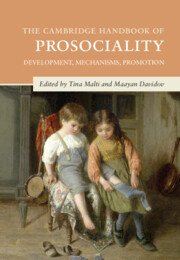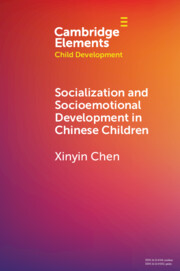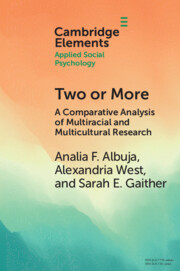95 results
3 - The Lawyering Culture
-
- Book:
- The Legal Brain
- Published online:
- 08 May 2024
- Print publication:
- 09 May 2024, pp 43-56
-
- Chapter
- Export citation
Productive function of urban gardening: estimate of the yield and nutritional value of social gardens in Prato (Italy)
-
- Journal:
- Renewable Agriculture and Food Systems / Volume 39 / 2024
- Published online by Cambridge University Press:
- 12 February 2024, e4
-
- Article
-
- You have access
- Open access
- HTML
- Export citation
Eccentric Circles: Rudolf Goldscheid and the Unrealized Goal of Menschenökonomie during the Era of Socialization
-
- Journal:
- Central European History , First View
- Published online by Cambridge University Press:
- 18 December 2023, pp. 1-19
-
- Article
- Export citation
7 - Ties
-
- Book:
- Frontline Crisis Response
- Published online:
- 28 September 2023
- Print publication:
- 12 October 2023, pp 100-117
-
- Chapter
- Export citation
Chapter 2 - The Role of the Strong Black Woman Schema in Black Love and Relationships
- from Part I - Race, Racism, and Identity
-
-
- Book:
- Black Couples Therapy
- Published online:
- 27 July 2023
- Print publication:
- 10 August 2023, pp 38-57
-
- Chapter
- Export citation
5 - The Public, Fans, and Policy Support
-
- Book:
- Equality Unfulfilled
- Published online:
- 06 July 2023
- Print publication:
- 20 July 2023, pp 138-163
-
- Chapter
- Export citation
18 - Parenting, Socialization of Emotion, and the Development of Coping
- from Part V - Social Contexts and the Development of Coping
-
-
- Book:
- The Cambridge Handbook of the Development of Coping
- Published online:
- 22 June 2023
- Print publication:
- 06 July 2023, pp 447-467
-
- Chapter
- Export citation
27 - I Don’t Want to Go Downstairs!
- from Part IV - Caring For Your Soul
-
-
- Book:
- The Gift of Aging
- Published online:
- 08 June 2023
- Print publication:
- 08 June 2023, pp 187-195
-
- Chapter
- Export citation
18 - Parenting and Children’s Prosociality
- from Part III - Development of Prosociality in Context
-
-
- Book:
- The Cambridge Handbook of Prosociality
- Published online:
- 25 May 2023
- Print publication:
- 08 June 2023, pp 361-387
-
- Chapter
- Export citation

The Cambridge Handbook of Prosociality
- Development, Mechanisms, Promotion
-
- Published online:
- 25 May 2023
- Print publication:
- 08 June 2023
21 - On Ethical Pedagogies
- from Part III - Media and Modes of Ethical Practice
-
-
- Book:
- The Cambridge Handbook for the Anthropology of Ethics
- Published online:
- 11 May 2023
- Print publication:
- 25 May 2023, pp 536-558
-
- Chapter
- Export citation
Changing adolescent activity patterns and the correlation of self-esteem and externalizing mental health symptoms across time: results from the USA from 1991 through 2020
-
- Journal:
- Psychological Medicine / Volume 54 / Issue 1 / January 2024
- Published online by Cambridge University Press:
- 15 May 2023, pp. 169-177
-
- Article
- Export citation
19 - Agonistic Democracy and the Question of Education
- from Part Three - Key Topics and Concepts
-
-
- Book:
- The Cambridge Handbook of Democratic Education
- Published online:
- 20 April 2023
- Print publication:
- 27 April 2023, pp 311-327
-
- Chapter
- Export citation

Socialization and Socioemotional Development in Chinese Children
-
- Published online:
- 24 February 2023
- Print publication:
- 09 March 2023
-
- Element
- Export citation
Socialization and Stress in Cats (Felis Silves Tris Catvs) Housed Singly and in Groups in Animal Shelters
-
- Journal:
- Animal Welfare / Volume 8 / Issue 1 / February 1999
- Published online by Cambridge University Press:
- 11 January 2023, pp. 15-26
-
- Article
- Export citation

Two or More
- A Comparative Analysis of Multiracial and Multicultural Research
-
- Published online:
- 23 November 2022
- Print publication:
- 22 December 2022
-
- Element
-
- You have access
- Open access
- HTML
- Export citation
30 - Interculturality and the Study Abroad Experience: Pragmatic and Sociolinguistic Development
- from Part V - Language Learning
-
-
- Book:
- The Cambridge Handbook of Intercultural Pragmatics
- Published online:
- 29 September 2022
- Print publication:
- 20 October 2022, pp 788-814
-
- Chapter
- Export citation
11 - Vague Language from a Pragmatic Perspective
- from Part II - Key Issues in Intercultural Pragmatics Research
-
-
- Book:
- The Cambridge Handbook of Intercultural Pragmatics
- Published online:
- 29 September 2022
- Print publication:
- 20 October 2022, pp 274-300
-
- Chapter
- Export citation
Language Matters: The Study of Canadian Politics through an Exploration of Syllabi and Comprehensive Exams
-
- Journal:
- Canadian Journal of Political Science/Revue canadienne de science politique / Volume 55 / Issue 4 / December 2022
- Published online by Cambridge University Press:
- 07 October 2022, pp. 897-915
-
- Article
- Export citation
The Business Creation Process and Latin American Entrepreneurs
-
- Journal:
- Latin American Research Review / Volume 58 / Issue 1 / March 2023
- Published online by Cambridge University Press:
- 26 September 2022, pp. 90-109
-
- Article
-
- You have access
- Open access
- HTML
- Export citation



